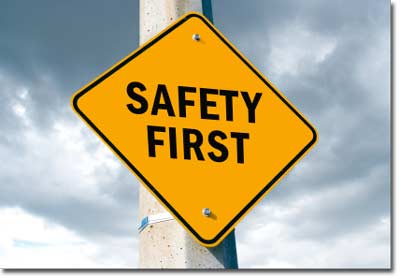
A leading employment lawyer explains how the HSWA will continue to impact employers in the year ahead.

In the first year of the Health and Safety at Work Act’s (HSWA) operation many businesses reassessed their existing health and safety management systems. Areas of particular interest for businesses have been the practicalities of how to consult, cooperate and coordinate activities with other PCBUs (person conducting a business or an undertaking), how to comply with the new reporting requirements, and how to ensure officers are meeting their due diligence obligations.
2017 will unsurprisingly see the continuation of WorkSafe’s active involvement in the workplace. While WorkSafe will enforce the obligations of duty-holders where appropriate, we anticipate that there will be a strong focus on engaging those who influence the workplace, and educating businesses on what good health and safety practices look like. The growing trend of education through proactive workplace assessments can be seen from the number of workplace assessments that WorkSafe carried out over the last three years. Between 2013 to 2016 there was an increase each year in the number of workplace assessments conducted, with 16,959 carried out in 2016. If this trend were to continue, it is estimated that there will be around 20,000 proactive workplace assessments in 2017.
We will also see WorkSafe navigate uncharted waters as prosecutions begin to roll in under the new Act and new enforcement measures, such as enforceable undertakings, are explored. With 12 months to investigate under the HSWA (as opposed to six months under the old law), the timing of many such prosecutions will likely be post April 2017. Worksafe’s focus will continue to be on pushing for bettering safety outcomes for s for businesses operating in the agriculture, forestry, construction and manufacturing industries.
Consult, Cooperate and Coordinate
A key change under the HSWA is for businesses working together to consult, cooperate and coordinate with each other where overlapping duties arise. This has particular implications for contractor and supply chain management, and also where there are multiple businesses working at the same location. Even in the early months of the HSWA’s operation, we have seen a focus on this obligation in the questions asked by WorkSafe inspectors (including where consultation, cooperation and coordination between business does not appear to be a factor in whatever event has brought the inspector on site). This attention is likely to continue to increase – and businesses would be wise to review their contractor management practices with this obligation in mind.
Enforcement
With a Government target of reducing workplace fatalities and injuries by 25% before 2020, we expect WorkSafe to continue carrying out in-depth investigations of incidents involving serious harm. We also expect WorkSafe to use the full range of tools available to it under the Act to enforce health and safety obligations including agreeing to enforceable undertakings in appropriate cases. This particular compliance tool lifted directly out of the Australian Model Law is designed to secure quick and effective remedies for contraventions without the need for court proceedings. It is an offence to breach the undertaking with fines not exceeding $50,000 for individuals and $250,000 for any other person.
Further Regulations in 2017
As part of the first phase of developing regulations to accompany the HSWA, a number of new or updated regulations have been issued. These include regulations in relation to asbestos, general risk and workplace management, worker engagement, participation and representation. The new regulations came into force on 4 April 2016, at the same time as the HSWA (although transitional provisions apply to certain matters under regulations relating to asbestos, major hazard facilities, mining and quarrying operations, and petroleum exploration and extraction regulations). In 2017, regulations relating to hazardous substances are expected to be finalised – current indications are that they will come into effect in December 2017. The coming years will continue to see further regulatory change, with regulations made under the Health and Safety in Employment Act (which will continue in force under the HSWA) being reviewed and amended/replaced.
If you’d like to look at some online training to help your organisation to understand their responsibilities under the HSWA then click here.
This article originally appeared in MinterEllisonRuddWatts 2017 Litigation Forecast, which you can read in full here.
Gillian Service is an is an internationally recognised employment law specialist, with significant experience practicing in top tier law firms in New Zealand, Scotland and England. Gillian is ranked by the Chambers Asia Pacific legal directory.
Recent stories: